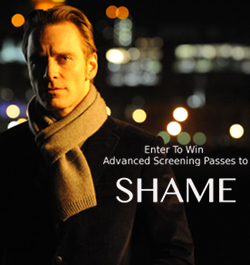Review: Three Resurrected Drunkards (1968)
We continue our exploration of the works of Nagisha Oshima with his surreal and humanistic Three Resurrected Drunkards (Sinner in Paradise). This 1968 film comes at the tail end of Oshima’s jaded search for personal identity in a senseless world and finds him in a place of humanism. This humanism replaces some of the disillusioned nihilism that was characteristic of his early 60’s work. The Three Drunkards, as played by the Japanese pop group The Folk Crusaders, would be the younger brothers of characters in earlier films like A Cruel Story of Youth. The impact of World War II and the harsh realities of life during the rebuilding would be dulled by time and steadily increasing affluence. There are some lessons that shouldn’t be so easily forgotten, and Oshima uses the influence of pop stars to try and wake up the apathetic youth and remind them of their obligations as citizens of humanity.
Many of Oshima’s earlier works would be right at home with the films of Nicholas Ray. The unharnessed and rebellious nature of the young and disenfranchised would manifest itself through lust and violence. Oshima would eventually reconcile some of these aspects within himself, and his art would shift with his own attitudes and sensibilities. Three Resurrected Drunkards lives in post Godard pop aesthetics and political sensibilities. It also allows itself to come off the hinges, and surrealist tendencies that would pop up its head in earlier Oshima work would take center stage. Behind the surrealism and Godardesque shtick lies a deeply human film and one that touches on themes that Oshima would tackle for his entire life.
If every student could be subjected to the absurd journey that our three protagonists found themselves the unwitting participants of, then perhaps jingoism and national isolationism would give way to compassion. Oshima does the next best thing in casting pop stars to act as the avatars for an entire generation. Anyone that has explored Oshima’s work to a great extent can see his controversial attitude toward Korean immigration in Japan. This was a theme that would resurface often in his work. Korean’s were likely the best candidate to illustrate his point as immigration was having a profound impact of the cultural landscape of the time, but the primary point at the heart of this was that all people were members of humanity regardless of arbitrary borders implemented by whichever side won whichever long forgotten conflict.
Our three drunkards get a second chance to figure this out for themselves, and eventually find that they are unable to separate their own identities with those of the persecuted Korean stowaways. They lose their youthful exuberance as they are confronted with the injustices of the world and the image of “General Nguyen Ngoc Loan executing a Viet Cong prisoner in Saigon” which played an integral role in the film was no longer a target rife for their playful ridicule. They will find an understanding and empathy for all of humanity, and though they will not have the influence or means to propagate this compassion to the rest of the world, one day they may get their chance.















 Review: Outrage (2010)
Review: Outrage (2010) Subversive Saturdays: Unglassed Windows Cast a Terrible Reflection
Subversive Saturdays: Unglassed Windows Cast a Terrible Reflection Review: Hugo (2011)
Review: Hugo (2011) Review: The Muppets (2011)
Review: The Muppets (2011) Review: The Muppets (2011)
Review: The Muppets (2011)





